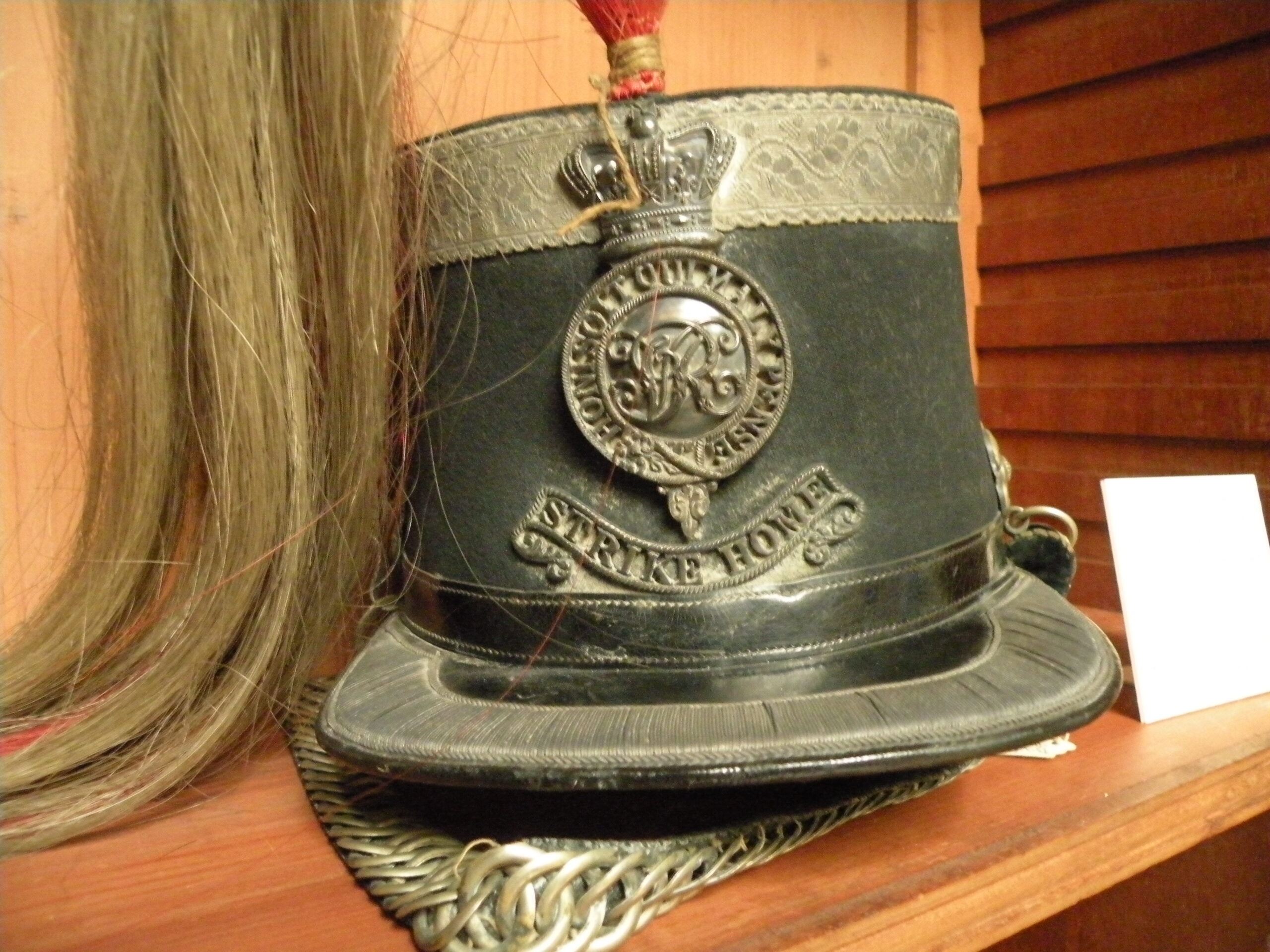It was not unusual for yeomanry regiments to adopt official patterns of uniform and equipment either sometime after they were introduced or, indeed not at all. Having been known as the 2nd or Hussar Regiment of Bucks Yeomanry Cavalry between 1821 and 1845, the Royal title was granted following Queen Victoria’s visit to Stowe in the latter year, at which time the regiment became the 2nd Royal Bucks Regiment of Yeomanry Cavalry. The persistence of the use of the nomenclature of the second regiment reflected the existence of three separate regiments in the county from 1803 until 1827 when the 1st (Southern) and 3rd (Northern) Regiments were disbanded. Within the 2nd Regiment, the Buckingham or Carbineer Troop continued to wear hussar uniform whilst the remainder adopted a light dragoon uniform in about 1841. Inconsistencies persisted until the early 1860s when all adopted a hussar style tunic. The older ‘Albert pattern’ shako was worn until 1864 when the 1857 light dragoon pattern shako was adopted. In 1872, however, significant changes were made to the regimental uniform when all embraced the hussar busby although, paradoxically, the regiment’s two artillery troops had continued worn the busby since the 1840s. Only minor changes were made to the uniform after 1872, the regiment only becoming known officially as the Royal Bucks Hussars in 1889. However, the two artillery troops originally established in 1820 wore an 1840-style tunic until yeomanry artillery troops were abolished in 1876 but even then former members of these troops still in the regiment were permitted to continue to wear the old tunics into the 1890s.
The difference between the 1857 pattern shakos of officers and men was that the former had a drooping plume of white tail feathers out of a silver-plated socket whilst the latter had a white hair plume.
